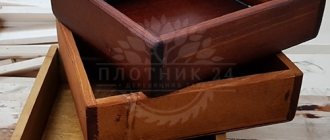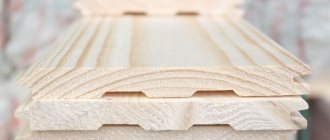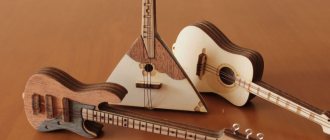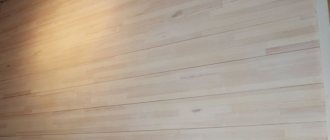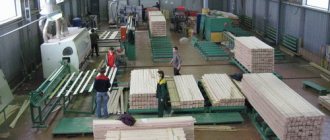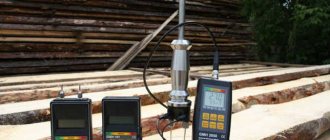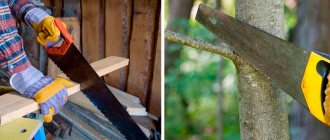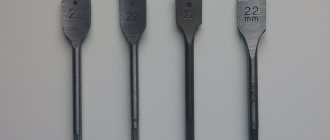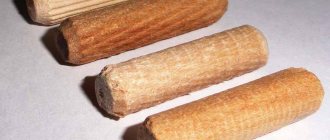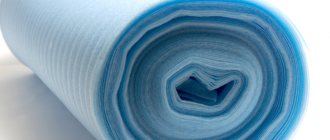To comfortably furnish the interior today, vintage or retro style is often used. Antique finishing decorates the room quite well, gives it charm, and sometimes a certain romance. Country houses or huge apartments are often decorated this way. One of the best materials today is brushed lining - an environmentally friendly and natural material. Used to decorate any room - creates the effect of coziness and comfort.
This type of cladding appeared on the market quite recently and is made from coniferous or deciduous wood. The textured board has a wood relief, has a bright texture and high quality.
The brush looks great indoors and creates a fairly cozy atmosphere. Brushed lining is a natural and clean material, which allows air to pass freely, creating the right climate in any room. The word “brushing” means imparting not only texture, but also color.
Brushed boards differ from ordinary lining in their appearance. It is produced according to the same standards as a regular similar facing material.
This type of cladding also has another name: “artificially aged”, “textured” or “textured” lining. In most cases, the name of the material may depend on how it is processed.
Wood naturally ages due to its heterogeneous structure. Wood has two types of fibers: soft and hard. The former are destroyed much faster, which is why small depressions and black stripes appear on the board. Sometimes this process is accelerated by various surface treatment methods.
Methods for processing brushed lining:
- Mechanical;
- Fire or hot processing method.
Absolutely any of these methods can achieve a natural antique effect. Materials for processing boards are inexpensive and available to everyone, but in order to make them, you need certain knowledge.
What types of brushed lining are there?
According to the quality of wood material in production, they are divided into four groups, which are characterized by certain requirements for the manufactured material: Premium class and classes: A, B, C.
It’s worth looking at what each of them means:
- The premium group is considered impeccable material. It does not contain any defects, cracks or knots - it is a perfectly smooth and even surface;
- Class A. These products do not have a core, but for this category there is a tolerance for the presence of one live knot, which can occur every 1.5 m. In addition, the product has two resin pockets and a few blind cracks;
- Class B. This category implies the presence of 4 knots for every 1.5 m, and two cracks, which should not be blind. Also, the product may have a small stain that appeared during processing and painting of the material;
- Class C. In most cases, defective products are included here, but in reality this cannot be done. According to GOST, this material should be of fairly good quality, have only one stain, as well as some mechanical defects in the form of light stripes and cracks.
What sizes does a brushed board come in?
Today, in construction stores you can purchase both regular boards with an aging effect and euro material, which has a completely similar surface.
The board is made according to certain standards: European or Russian. European material is made of higher quality, in accordance with all necessary standards, than Russian material.
It is very important for the lining to have exact dimensions; due to the optimal footage, it will not dry out and will not be susceptible to cracks. Therefore, when choosing a material for cladding, it is worth paying attention to the fact that one of the important parameters should be compliance with all necessary standards - the material is the same in all dimensions.
Standards and sizes of European and domestic lining:
| Parameter | Standard in mm | Euro in mm |
| Spike height | 5 | 8 |
| Product thickness | 12 — 40 | 12, 5 |
| Length | 0.2 - 6 m | 0.4 - 6 m |
| Width | 76 — 200 | 80, 100, 110, 120, 140 |
Also, do not forget that there are deviation standards that the manufacturer always declares:
The width deviation may be 1 mm;
- Length – 5 mm;
- Spike height – 0.5 mm;
- Thickness – 0.7.
Deviations should not exceed these indicators. If they are significant, then such material is not worth purchasing. Most likely, this is a defect, which will naturally affect the quality of the room’s cladding.
Beautiful examples of interior decoration
To understand how to properly use an unusual material for the most harmonious integration into the interior, you can refer to the examples of the photo gallery.
Stylish solution for the ceiling. Light walls soften the perception of the dark tone of the lining.
A good solution for finishing the bedroom ceiling. Due to the light shade and beams, the ceiling composition looks light and natural.
Separation of functional areas through color.
An interesting solution for the bedroom. Giving the lining the appearance of wallpaper by painting the boards in different shades.
Dividing the room into two functional zones. Appropriate accentuation of the dining area with support for the same shade of furniture in the guest and kitchen spaces.
Combining wall and ceiling decoration with highlighting the kitchen space looks beautiful and stylish. The use of white fills the room with light and coziness.
An original approach to decorating a compact guest area. The use of light solid colors brings a feeling of nobility and high status to the interior.
Another example of a dosed approach to the design of walls and ceilings. Choosing different colors allows you to soften the perception of the abundance of finishes.
An original design technique for highlighting, characterized by brightness and dynamics. Emphasizing the recreation area.
A step that the owner of a spacious house can afford. The unusual color of the painted paneling with the transition of the trim to the accent of the living room brings special notes to the interior.
An original solution for the hallway. Partial lining of the walls with clapboard and a light shade make the entrance room special.
To learn how to choose the type and size of lining, see the following video.
What is brushed lining made from?
The cladding material is made from trees. Most often, pine needles are used for this, and sometimes deciduous trees. It is worth noting that this lining requires only raw wood. Commonly used are pine, larch, cedar and spruce. Not all deciduous trees are used, but only some of them: aspen, alder, ash, oak or beech.
This raw material has a good texture, thanks to which you can design a board with a 3D effect. These trees crack much less, tolerate absolutely all processing methods and are much less susceptible to defects. The brushed lining produced by this method looks quite good and looks very high quality.
Production technologies
After the raw material goes through standard processes (sawing, drying, shaping), it undergoes special processes to highlight the structure of the fibers and pores. To do this, a pattern of miniature holes resembling wormholes is formed on the surface. This texture perfectly emphasizes the naturalness of artificially aged boards.
- Brushing with a brush. The most common way to give wood a touch of noble antiquity. Small metal teeth strongly rub the surface until the growth rings become clearly visible. The achieved result is then sanded to bring out the wood grain even more clearly. The next mandatory step is coating with stain.
- Patination. Here, instead of a brush, an abrasive sponge or sandpaper is used. But before this, the panel is covered with paint of a suitable tone, and after it dries, it is painted over with another one (of a different color). When the surface layer has completely set, begin sanding. As a result, the boards get interesting gaps consisting of two types of paints.
- Creating a worn effect. This is the simplest and most practical technology - inexpensive, fast, lightweight. It only needs two things: wax and paint, which are applied alternately, after which the lining is carefully sanded. The best material for this process is oak, larch, spruce, and pine. In other cases, the panels turn out to be unsightly and look cheap.
Machine for brushing lining
How to make brushed boards
To obtain the aging effect, it is very important that the material is of good quality and amenable to further long-term processing. Coniferous trees perfectly meet all the necessary requirements and standards.
Once the wood has gone through all the treatment, it will go through a special process that can highlight the grain and structure of the wood. To do this, you need to make a small pattern of small holes that look like wormholes. This method can achieve the effect of an aged board.
Brushing with a stiff brush. This method is one of the most common, which helps to make the wood look antique. Thanks to long-term processing with small teeth, the annual circles are more pronounced and look very impressive. Next, sanding is done, and at the end the board is covered with stain.
Patination. Before processing such materials, the board must first be painted in an appropriate tone, and after drying, another layer of coloring pigment must be applied. After the surface has completely dried, the covering material is treated with sandpaper or other abrasive accessories. As a result, the brushed lining has an interesting two-color clearance.
Creation of artificial abrasion. The simplest and easiest technology. To do this, you need two things: wax and a coloring pigment. First, wax is applied, then paint, after which the board is thoroughly sanded. The following raw materials are suitable for this method: oak, spruce, larch or pine. If you use something else, the lining does not look as impressive, and the panel looks cheaper.
Processing methods
Manual processing method
The highest surface class can be achieved by manual brushing. A brush is used for this. The brush is used to remove fibers layer by layer.
It is important to note that booking without automation of the process makes it possible to achieve a higher class
Periodically, after removing each layer, firing can be carried out. Firing allows you to change the structure and change the color of the base. The brush is selected taking into account the type of solid wood.
It is advisable to use the manual method of removing fibers when creating decoupage. Decoupage is a special decoration method that allows you to create beautiful things by hand. In this case, decoupage is coated with oil or varnish to give a special effect. The surface is often fired to achieve a unique result.
The manual method is rarely used to produce floor boards. Only expensive, high-end floor boards are made by firing and manually removing the fibers.
Mechanized processing
Decoupage can only be obtained by manual processing, but in other cases an angle grinder is used. This is due to the fact that decoupage requires painstaking work, and angle grinders are used only for large amounts of work.
Features of using an angle grinder include:
- a tool called an angle grinder - an angle grinder, which is rarely used when creating decoupage, but has become widespread in mass production;
- The angle grinder has replaceable attachments that can be selected according to the type of wood. They can be changed quickly;
- As a rule, an angle grinder operates from a household voltage network. There are versions that can be powered from a built-in power supply;
- in some cases, an angle grinder is used to perform the primary stage of surface aging. After this, manual removal of the layers can be carried out. Therefore, in some cases, materials for decoupage are also initially processed by an angle grinder;
- the tool allows you to significantly speed up the process, which reduces the cost of its implementation;
- The quality of the result obtained is somewhat lower, but often it is sufficient.
Mechanization also makes it possible to fire or coat the surface with oil. The surface should be coated with oil or varnish because the fibers are very susceptible to temperature or humidity changes. Firing provides less protection to the structure. Often firing is a preliminary step before coating the surface of a nylon or other base. You can change the appearance by using a paint and varnish product.
Tags: Sanding wood
How to choose a lining
When the time comes to select a material, you should understand that the color scheme and shade of the wood are not so important, because the artificially created aging of the board will later be treated with tonic varnish or oil.
When choosing brushed lining, you must always pay attention to the quality and compliance with the dimensions of the product.
People decide what material to choose based on the room for which it will be used, and, naturally, based on the pricing policy.
Scuffs
Application of wax impregnation.
This method of aging lining is also quite common. It is very simple and does not require much time to work. In this case, you will only have to spend money on buying wax. This is what will be applied to the wooden surface. It is worth noting the fact that this method has been used for decades. It has established itself as the most practical and simple. All work can be done at home.
Here, too, certain areas of the product need to be covered with paraffin, and then with two layers of paint, as was described in the previous case. Next, the layer of paraffin is removed from the surface of the lining, and it itself is carefully polished. The wood is then treated with stain and covered with wax. This method has been used for decades. It is quite simple and effective. The effect of antiquity becomes evident.
Why is it necessary to use brushed lining?
This material is of fairly high quality, and because of this, it is quite expensive. Many people want to buy it, because finishing a room with brushed boards, at a minimum, ensures a long service life of the material, is environmentally friendly and safe for humans.
Advantages of brushed boards:
- Has a non-toxic composition;
- Moisture-resistant structure;
- Durable enough;
- Provides reliable protection against ultraviolet rays.
Where is the board used?
Brushed lining fits well into any interior. It looks great in a classic style, and is also used in country, Provence, vintage and retro. Perfect for covering cabinets, living rooms, dining rooms, terraces, balconies, loggias, etc.
The lining material gives the room a good imitation of antiquity, which makes it more cozy and comfortable. It is often used to decorate a summer house or any other residential premises.
Do-it-yourself wood brushing: artificial aging of wood
Parquet with the effect of aged wood looks very beautiful
This wood structuring technology is suitable for use with soft and hard woods that have a clearly defined texture and obvious layers of different hardness:
- pine
- oak
- larch
- ash
- nut
- wenge
Brushed table in a rustic living room interior
Beautiful spread of brushed wood
Loft-style living room combined with an office
Wood species with a fine-grained and indistinct structure are unsuitable for brushing, since they do not have the necessary layering. These types of materials include wood:
- beech
- maple
- alders
- teak
- birch trees
- cherries
Stylish kitchen apron made of brushed wood
Brushing will add uniqueness to your furniture
The use of brushing technology allows you to create original textures that look ideal in products for interiors of different styles. Structured wood is actively used in the manufacture of floors, furniture, and decorative elements. Natural wood fits perfectly into any design, adding original touches to it.
Which lining is most often used?
In most cases, boards made of larch are used for interior decoration.
It has a number of advantages:
- It is a durable material, does not lose its color and pattern;
- Larch is recommended for use in rooms where humidity is very high;
- It is considered an environmentally friendly and absolutely safe material for humans. It is often used to line rooms where children live and bedrooms;
- Brushed lining comes in pleasant warm colors and can be matched to any interior;
- This board is highly resistant to various types of damage;
- Euro-lining “Stil” is now in considerable demand. This type of cladding differs from others in that the material does not have a shelf front panel. Thanks to this, a more dense connection and a smooth, even surface appear during the processing process. The only thing noticeable is the indentations where the seams are located.
How to choose quality material
It is worth considering several recommendations that will help you choose high-quality and reliable material for cladding any room:
- When purchasing brushed lining, you should pay attention to the condition it is in. If the texture is curved or slightly twisted, then it will be quite difficult to make a high-quality cladding of the room with its help;
- It is worth paying attention to the integrity of the packaging material in which the product is located. If the board was not hermetically sealed, then most likely it could absorb unwanted moisture. Unfortunately, this results in poor quality material;
- One of the best in quality and durability is the material made from alder wood. It will not lose its density over time and will delight a person with its original appearance.
Characteristics of larch
To build a country house from timber in the European part of Russia, oak or linden wood is often used. These materials are very common, but have certain disadvantages:
- Linden and oak fade over time;
- Under unfavorable conditions, the trunk of linden, cedar and some other species begins to rot. Therefore, they are not used as covering walls and floors in a steam room, shower, garage, etc.;
- The shrinkage of these species is uneven, i.e., after the season, some boards may be thicker, some thinner;
- Linden does not tolerate severe frosts and is extremely unstable to moisture and wind.
Photo - a room made of larch
Therefore, brushed lining made of natural Siberian larch is increasingly used for the construction of houses and decoration of rooms. Larch comes in the following types:
- Daurskaya;
- European;
- Primorskaya;
- Siberian.
Daurian larch grows in Kamchatka; its boards are ideal for decorating apartment rooms, as they crack when exposed to moisture and sunlight. Insensitive to temperature changes, does not fade.
Photo - example of Daurian lining
European or deciduous larch has excellent longevity. It does not bend or break, and can even withstand torsional loads. Its wood is quite hard and rough, but lends itself well to processing. This type of larch is often used to produce various lumber: lining, chips, decorations, etc. The key difference from many other species is the ability of wood to retain its properties even when in water or land, which is why it is used for finishing basements, building boats and ships.
Photo – European
The variety of Siberian larch, which is often used for the production of lining, has the best characteristics of all the listed models. It is wide and durable, withstands temperature changes (the minimum minus for this breed is -50 degrees, and plus - +60). The wood does not crack even at high humidity. The main feature of this breed is that over time the board acquires a noble, deep shade. Most of the temples, which are more than 400 years old, were built from Siberian larch.
Photo - Siberian
Primorsky larch lends itself very well to various types of processing. It is soft but durable, so it is often used as a material for covering floors and walls. It has a low drying threshold, does not fade and is not susceptible to the harmful effects of moisture.
Photo – Primorskaya
The characteristics of larch are determined by the compression of the wood and its reaction to a certain level of humidity:
| Breed | Density at 15% humidity, g/cm3 | Sapwood color | Ultimate compressive strength across the fibers, MPa | Static bending strength, MPa |
| Daurskaya | 0,65 | Brown | 641*105 | 1189 |
| Primorskaya | 0,53 | White, white-pink | 4,5 | 69 |
| Siberian | 0,6 | Red-brown | 650*105 | 1095,36* 104 |
| European | 0,59 | Yellow | 600*105 | 1100 |
Photo - house made of Siberian wood
